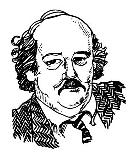(Syndicated to Kansas newspapers June 22, 2015)
By Martin Hawver
 The election—the important one, for Republican candidates for the Kansas House and Senate in August 2016—is just starting to heat up.
The election—the important one, for Republican candidates for the Kansas House and Senate in August 2016—is just starting to heat up.
No, not many candidate filings yet, no radio and Internet commercials or those little brochures stuck in the screen door—but that election is starting right now.
Reason? It’s that of the 97 Republicans in the Kansas House and the 32 Republicans in the Senate, the governor-approved tax package this session just passed by one vote in each chamber. That means 34 of those current House Republicans didn’t vote for the governor’s tax plan; 11 Senate Republicans didn’t, either. (No Democrats voted for the package.)
Hmmm…
That can’t be good for a governor who is just one year into his second and final term in office. It means, of course, that the Republican Party of Kansas can brag about its overwhelming majorities, but the titular leader of that party, Gov. Sam Brownback, doesn’t have the solid, stable legislature that he wants to enact…well, whatever he has left on his gubernatorial bucket list.
Lawmakers are, for Brownback’s purposes, sorta like a dog that won’t heel when you tell it to.
So, while there is still a legislative session left before August 2016, plans are probably starting now to prune out those legislators who campaigned under the Republican party label, but didn’t line up to vote for the governor’s tax package. They become the problem, and for Brownback’s purposes, might just as well have been Democrats, or children or illegal aliens or something else.
Practically, in most House and Senate districts in Kansas, because a majority of Kansans are registered as Republican voters, once you get the GOP nomination for the general election ballot, chances are good that you will get to spend winters in Topeka. That’s just the numbers.
So, for the governor, it is time to sort out the Republicans in the Legislature, and the governor is good at it. Look at the Kansas Senate in 2012, when Brownback and political and financial backers pruned the State Senate of most moderate Republicans and boosted the GOP majority to a near-record 32 members.
But the conservative shift in that election didn’t give the governor the certainty of passage of everything he could think up, and while he was involved in the House elections last August and November on behalf of Republicans, he was…how do you say it…distracted by his own reelection campaign.
For 2016, the governor has little to do except to dabble in the House and Senate primary elections and the general election.
So, that sorting has started: Which legislators are keepers and which need to be thrown back into the stream of the general public?
For moderate Republicans, this year’s tax votes show that they are close—with the help of Democrats, of course—to the majorities needed to repeal some of the conservative/Brownback inspired legislation passed this year and last.
But, that comes down to those pesky voters, the ones who, having gone out to lunch or were on vacation during the primary, just look for the letter behind a candidate’s name in November.
While Brownback and crew are pruning, voters might want to read those brochures, those e-mails and such, and identify that there are conservative and moderate Republicans, and maybe figure out where they personally stand. There’s R, of course, and then there’s R-squared.
And Democrats? They’ll benefit from Republican angst, when voters can’t decide whether the GOP candidate is too liberal, too conservative, or just about right. Ever think Republican-dominated Kansas would come to the time when voters might have to consider a Democrat vote the “safe” vote in determining where the government goes? It might get there next election cycle…
